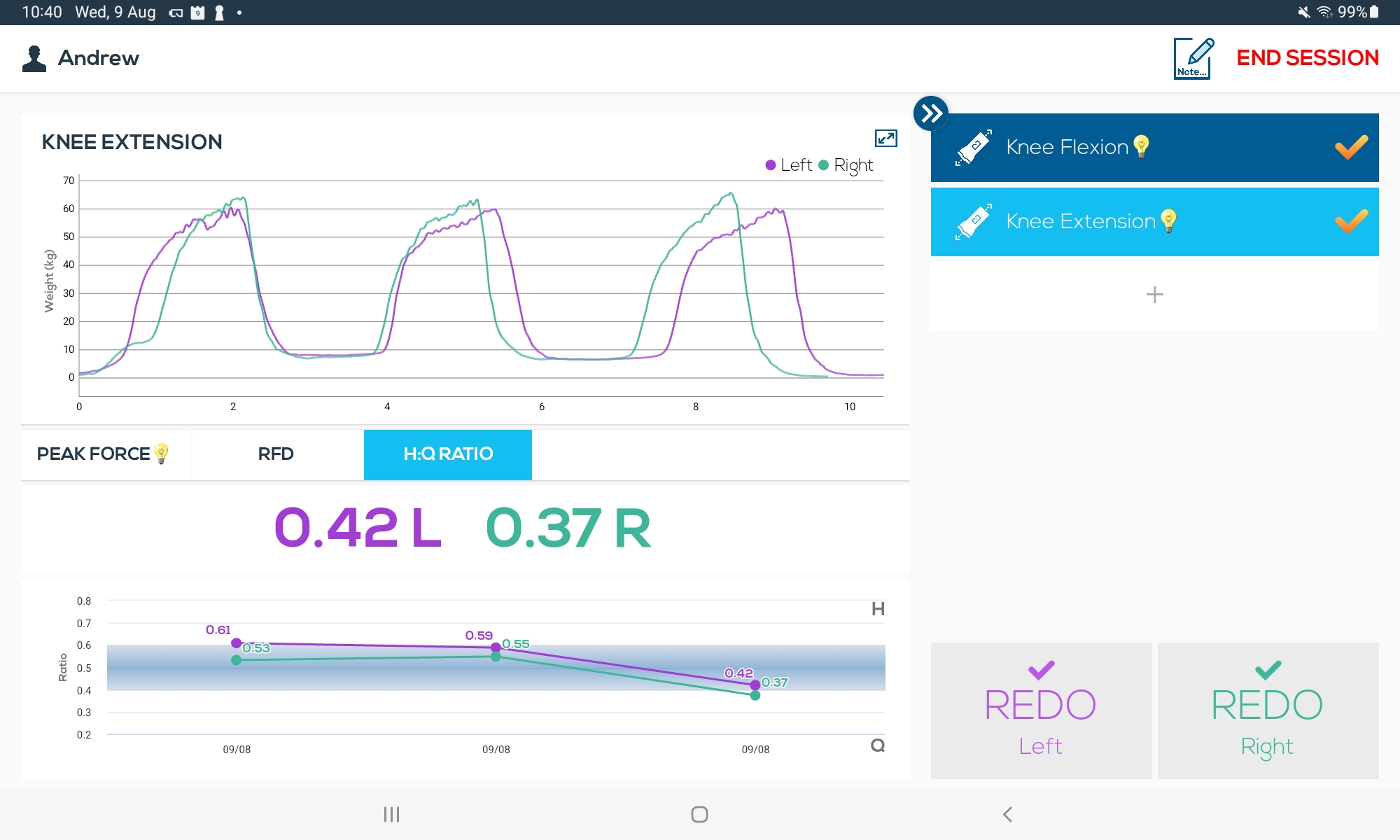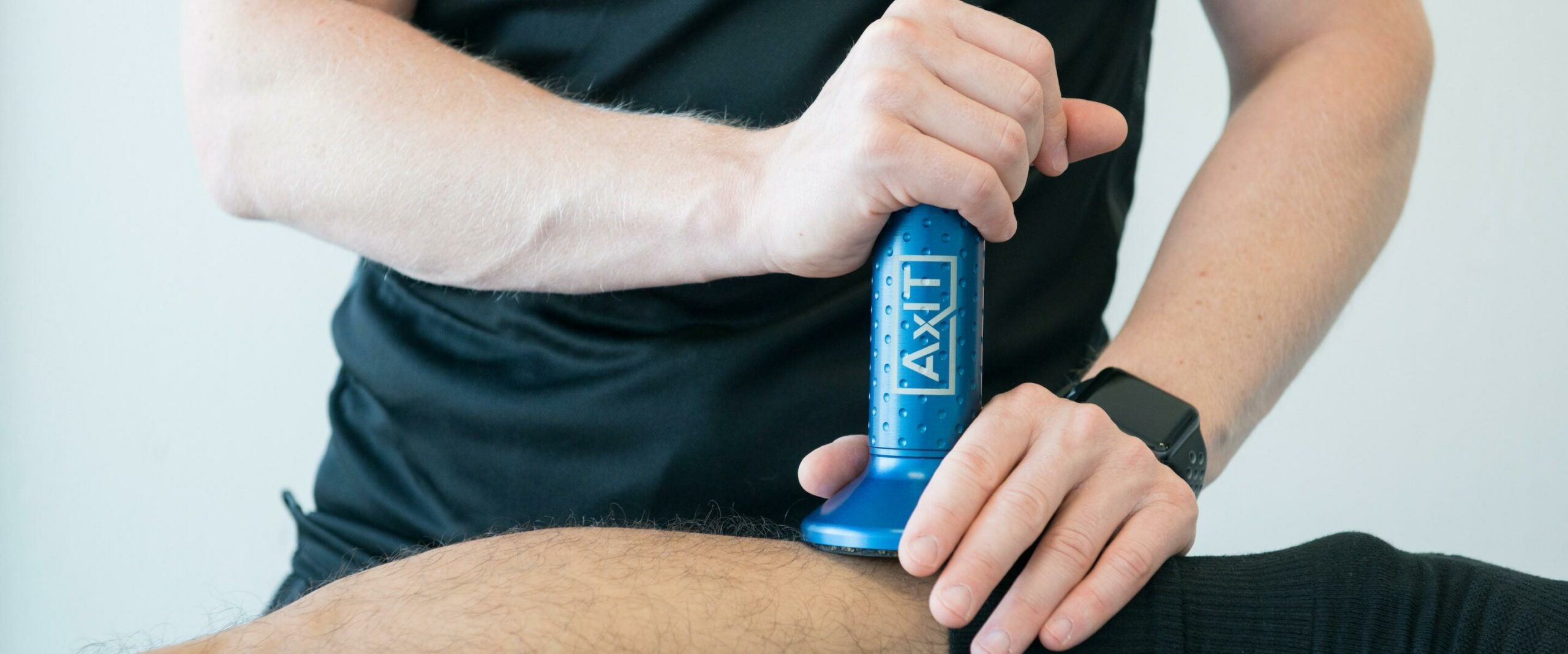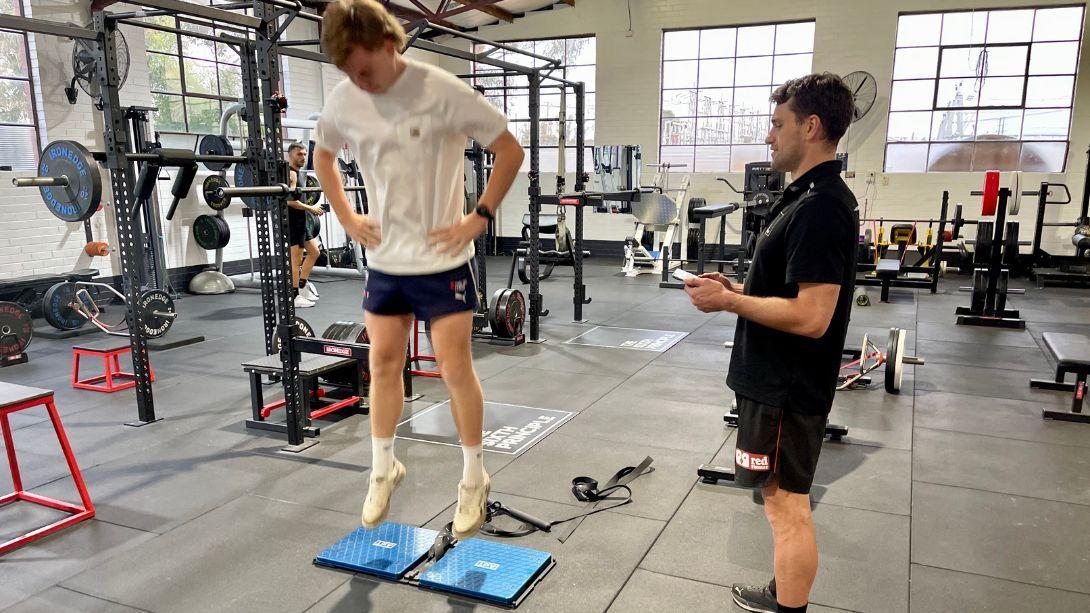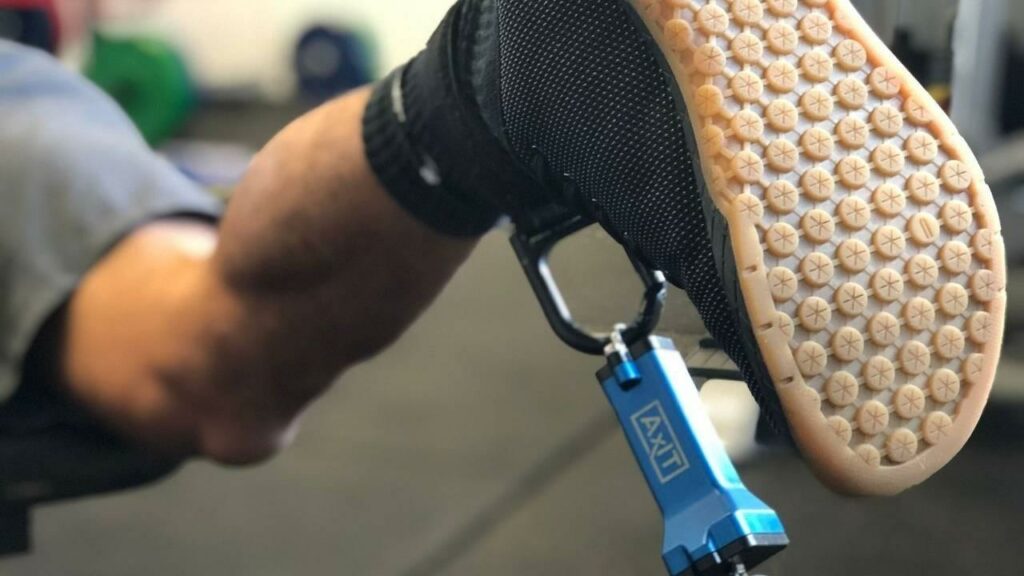In the world of health and fitness, the abundance of performance metrics has revolutionized the way we analyze client and athlete data, but determining which metrics truly matter in risk reduction and performance enhancement can remain a challenge.
Muscle strength ratios are a testing metric that has gained significant attention from health professionals in recent times and are commonly assessed during pre-season fitness evaluations, general client management, and post-operative testing batteries.
Ratios are single-value metrics made up of two parts: a numerator and a denominator. Essentially, a ratio quantifies the relationship between two quantities, showing how many times one value contains or is contained by another. In sports science, when we talk about symmetry, we’re usually comparing metrics between different sides or muscle groups. When looking at ratios, particularly with strength testing we are often looking at the relationship between agonist/antagonist muscle groups, although there can be some exceptions.
These metrics, such as the Hamstring:Quadriceps strength ratio, can be a simple way of evaluating clients’ overall fitness levels and assessing the balance and functional capacity of different muscle groups as there are often normative values we can compare our client to.
By examining these ratios, health and fitness professionals can comprehensively understand strength imbalances and design customized training programs to reduce potential risks and enhance performance.
What are the most commonly used isometric muscle strength ratios?
Isometric muscle strength ratios provide valuable insights into the relative strength and balance between different muscle groups. Now with the increased accessibility of portable dual force plates like AxIT Stomp-IT, or hand-held dynamometers like AxIT Push-IT and Pull-IT these ratios are easier to calculate in your clients than ever. In fact AxITs smart testing technology calculates many of these results for you!
There are many possible ratios utilized in assessing muscle strength, some of the most commonly used ratios include:
Hamstring to Quadriceps (H:Q) Ratio:
The H:Q ratio compares the strength of the hamstring muscles (back of the thigh) to the quadriceps muscles (front of the thigh). This ratio is often measured to assess the risk to the knee and is particularly used when programming training exercises post anterior cruciate ligament (ACL) reconstruction. Imbalances between the hamstrings and quadriceps can lead to altered knee joint stability as well as reduced performance in both sporting activities and activities of daily living. A balanced H:Q ratio is typically considered to be 0.4 – 0.6 (Padulo et al 2020, Muff et al 2016). A higher ratio indicates relatively stronger hamstrings, while a lower ratio suggests greater quadriceps dominance.ectetur adipiscing elit. Ut elit tellus, luctus nec ullamcorper mattis, pulvinar dapibus leo.

Shoulder External Rotation to Internal Rotation (Shoulder ER:IR) Ratio:

This ER:IR ratio evaluates the strength balance between the muscles primarily of the Rotator Cuff responsible for external rotation and internal rotation. Unlike some other areas of the body these ratios can also be assessed in a variety of different positions that generate markedly different results such as with the shoulder in a neutral position by one’s side, at 45° of abduction, at 90° of abduction, of even a 90° of abduction with 90° degrees of external rotation. Imbalances in this ratio can impact shoulder stability and have been shown to have an effect on upper limb performance in activities such as throwing (Arnold et al 2022) and swimming (Boetccher et al 2020). A balanced ratio supports optimal shoulder function and reduces the risk of shoulder-related injuries. Depending on the study ER:IR ratios have been shown to be around 0.66-0.75 in a neutral shoulder position.
Hip Adduction to Abduction (Hip Add:Abd) Ratio:

This Add:Abd ratio evaluates the strength balance between the muscles responsible for hip adduction and hip abduction. Imbalances in this ratio can affect hip stability, increasing risk to the hip and reducing performance in movements such as running, jumping and changing direction. A balanced ratio supports optimal hip function, and research has suggested adduction-to-abduction strength ratio of 1.15-1.17 in a neutral hip position in hockey players (Olson et al 2022) and 1.13-1.21 in Elite and Sub Elite female soccer players (Jaenada-Carrilero et al 2023).
Other Ratios
Though strength testing are some of the most common ways in which ratios can be applied to help guide the management of clients in a health and fitness setting there are also other ways in which the ratio concept can be useful.

The Dynamic Strength Index (DSI) is a performance-enhancing ratio that provides valuable insights into an athlete’s strength and explosiveness. This index is calculated by dividing an individual’s dynamic strength force(typically measured through a dynamic test such as a jump) by their maximal strength force (typically a maximum strength test such as an Isometric Mid Thigh Pull). The DSI offers a quantitative measure of an athlete’s ability to convert maximal strength into dynamic power, making it a valuable tool for optimizing performance.
Research by Suchomel et al 2020 has shown that a DSI ratio of < 0.6 may indicates that the athlete has high strength buy low ballistic capacity while a score of > 0.8 indicates an athlete with a high ballistic capacity to strength ratio.
By assessing an athlete’s DSI, coaches and trainers can identify potential areas for improvement and tailor training programs to enhance explosiveness or strength output. A higher DSI suggests efficient utilization of maximal strength and a greater capacity for explosive movements, usually translated into superior athletic performance with sprinting, jumping or changing direction. However, this athlete may benefit from increasing their maximal strength potential. On the other hand, a lower DSI may indicate a need for additional training to enhance power and improve performance.
Athletes who focus on developing their DSI can benefit from improved speed, agility, vertical jump height, and overall power output. By understanding and utilizing the DSI as a performance-enhancing ratio, athletes can strategically train to maximize their strength and power potential and excel in explosive movements required in sports such as basketball, soccer, sprinting, and many others.
Want to learn more about how testing ratios could enhance your client outcomes?
At Strength By Numbers, we are excited to explore your needs and showcase the practical benefits of utilizing products such as AxIT in your health and fitness practice. Book a convenient time to talk with our friendly team by clicking here, and we will provide you with an online demonstration that demonstrates the powerful capabilities of AxIT in action.

